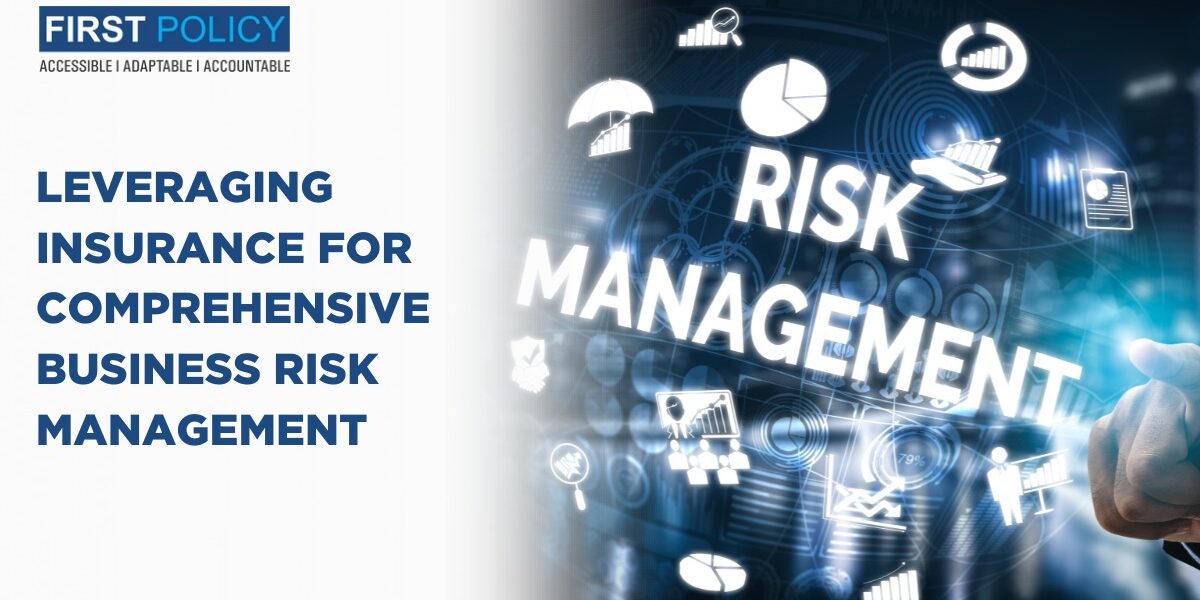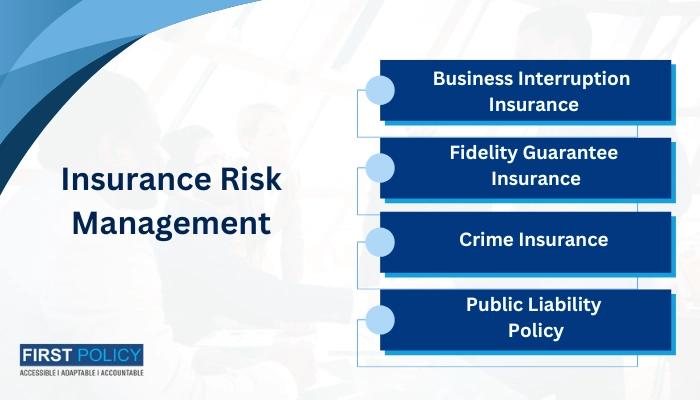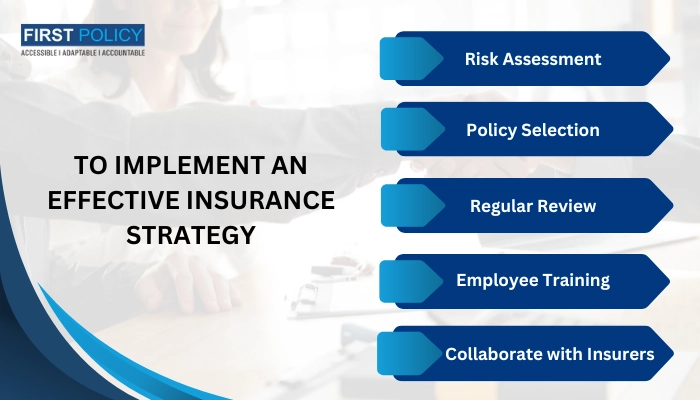
Leveraging Insurance for Comprehensive Business Risk Management
Risk management has made a paradigm shift to being a cornerstone of sustainable success in our today’s highly dynamic business environment. There are many risks a business may encounter such as operational disruptions, legal liabilities, employee dishonesty and even crimes you never saw coming.
Using insurance solutions designed to target specific risks, business are able to reduce the potential of loss, allowing their operations to continue on, and their financials to withstand the possibility of payout. However, this blog explores the best ways organizations can use insurance products to effectively manage risk for the entire business.
What Is Understanding Business Risk Management?
Business risk management includes identifying, assessing, and dealing with potential business risks that will cause the business to lose its objectives. All these risks may be internal, external, or a mix of both. However, even with preventive measure and contingency planning, insurance is taken seriously and plays an indispensable role in transferring your financial risk to an insurance company.
Insurance Risk Management

Insurance solutions are customized to various risks in such a way that businesses have a safety net in case anything unwanted happens. Here are some key insurance policies that businesses can leverage to create a comprehensive risk management strategy:
1. Business Interruption Insurance
A set of insurance (only actually taken up by a declining number) of the claim as an interruption to business – for example, it would contain compensation for the business’s profits lost during a force majeure, on the basis that it is not the client’s fault, and should not be expected to continue in business if the situation remains the same.
Businesses run one of the most significant risks from disruption of operations from natural disasters, fires or other unforeseen events. Business Interruption Insurance helps protect the organization’s financial health in case of such disruptions.
This policy pays for income losses suffered during the time when a business is under a necessary suspension of normal business operations due to a covered peril. For instance, if a fire causes the operation of a manufacturing unit to shut down, this insurance guarantees to support fixed costs, including rent, employee salaries and loan repayments, so long as the required documentation is provided.
It can also help, if necessary, businesses move temporarily, with minimal impact on supply chains or customer commitments.
Key Benefits:
- It pays for covers lost revenue during downtime.
- Funds temporary relocation.
- How it Continues to ensure business continuity, in spite of interruptions.
2. Fidelity Guarantee Insurance
Theft or fraud from employees is a major threat to business. Fidelity Guarantee Insurance pays out when loss to an organization results from the fraudulent act of an employee.
This policy is very useful for businesses that manage huge amount cash, inventory or sensitive data. This coverage gives a lot of benefit to the companies working with confidential client information like retail chains, banks, IT companies, etc.
Key Benefits:
- Protection against loss due to employee dishonesty.
- By showing proactive risk management it builds trust among stakeholders.
- Deals with thefts, forgery, and embezzlement by employees.
3. Crime Insurance
Crime Insurance takes these concepts up a notch — the crime coverage would protect your businesses against internal as well as external crimes. Fidelity Guarantee Insurance is a broader policy than the cover but this includes cover for crimes such as burglary, cyber theft, forgery and extortion.
With increasing incidence of online crime and sophisticated financial fraud, any business across all sectors should consider the addition of Crime Insurance to its portfolio. For instance, a ransomware attack on a business’s IT network could cost the business a great deal of money. These losses may be offset by Crime Insurance.
Key Benefits:
- It covers various criminal activities (cyber crime crimes).
- The reason is that it offers protection against losses from burglary and forgery.
- Improves the financial stability in the context of sudden criminal enactment.
4. Public Liability Policy
The risk of third party liabilities exists for businesses that are running their business out of public spaces or customers and vendors. A Public Liability policy covers businesses against legal and financial consequences that follow when and incident causes third party injuries or property damages whilst business is being conducted by the business.
One example is slip-and-fall incidents on a business’s premises, resulting in injury to a customer, so the policy takes care of the legal defense costs as well as compensation payments. It can also cover property damage caused by a business’s operations — for example, if a contractor accidentally damages a client’s property while doing renovations.
Key Benefits:
- Pays for legal costs, and compensation for third party claims.
- Shows accountability and thereby enhances business credibility.
- Reduces resulting reputational risks of liability claims.
Why a Comprehensive Approach is Important for Us?
Along with Business Interruption Insurance, Fidelity Guarantee Insurance, Crime Insurance, and Public Liability Policy take care of individual risks, but a piecemeal solution leaves people unprotected. These are policies that together construct a comprehensive insurance strategy that ensures complete coverage.
For example, if a retail business is burned down by a fire Business Interruption Insurance, if set up correctly, would cover that). If however, the employees use the chaos to carry out a fraud (under Fidelity guarantee insurance), then the business would require Crime Insurance to cover of any external theft.
In addition, a Public Liability Policy would become active in case a third party sues a claim for injuries suffered at the premises. Without such an approach, businesses may not be able to cover all of these eventualities.
To Implement an Effective Insurance Strategy

To leverage insurance effectively for business risk management, follow these steps:
1. Risk Assessment:
Determine what type of risk your business is exposed to – Operational risk, Financial risk, Legal risk, Reputational risk.
2. Policy Selection:
Pick up the insurance products depending upon your industry and risk profile. Check with insurance experts to find out what coverage options are available and what’s excluded.
3. Regular Review:
Risks also evolve, as do business environments. Review your policies regularly to stay in step with your current risk scenarios.
4. Employee Training:
Minimize the exposure to covered perils by training employees on compliance and risk mitigation.
5. Collaborate with Insurers:
Talk to your insurer closely to learn claims processes and make sure communication is not interrupted.
Conclusion
In an era of unpredictable business landscapes, being able to mitigate risks is key to long term success. Business Interruption Insurance, Fidelity Guarantee Insurance, Crime Insurance and a Public Liability Policy are important insurance policies to protect the financial losses, legal liabilities and disruptions to business operations.
With a thorough insurance strategy, the business can take its mind off growth and innovation, because they know they are prepared for the surprises.
By investing in the right insurance products we not only protect financial stability, but also show that we are committed to resilience and accountability. From the beginning of subjects on Earth, risks have never been taken out of our way, with the single recourse to insurance as the most reliable technique for our solace.


